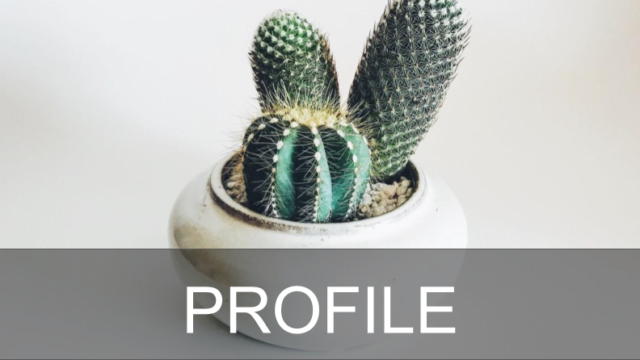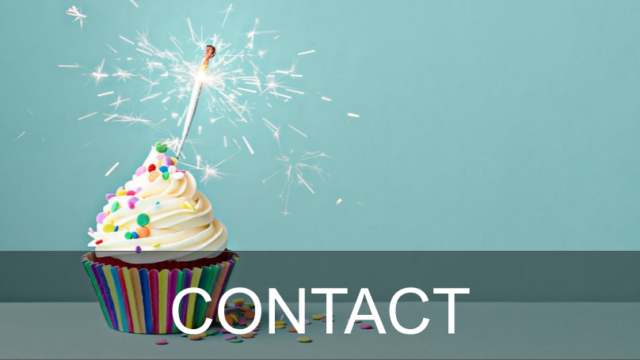Behavioral triggers are the cornerstone of highly personalized customer journeys, enabling brands to respond dynamically to user actions with tailored messaging and offers. However, moving beyond basic trigger setup requires a nuanced, technically sound approach that ensures relevance, timing, and execution accuracy. This deep-dive explores how to implement behavioral triggers with precision, backed by actionable techniques, advanced troubleshooting, and real-world case studies. For a broader understanding of the strategic importance, you can refer to the article on {tier2_anchor}.
1. Identifying and Segmenting Customer Behavioral Triggers for Personalization
a) How to Collect and Analyze Behavioral Data in Real-Time
Effective trigger implementation begins with comprehensive, real-time data collection. This involves integrating multiple data sources such as CRM systems, web analytics, mobile app event logs, and transactional databases. Use event streaming platforms like Apache Kafka or AWS Kinesis to ingest data continuously. Implement tag management systems (e.g., Google Tag Manager) for capturing on-site interactions, ensuring you track key actions such as product views, cart additions, and search queries.
Once data is collected, leverage real-time analytics tools like Segment or Mixpanel to process user actions. These platforms enable you to create behavioral event streams that are immediately available for segmentation and trigger logic. Use event timestamps and user identifiers to analyze patterns such as session frequency, navigation paths, and bounce points.
b) Techniques for Segmenting Customers Based on Behavior Patterns
Segmentation based on behavior involves creating dynamic audience segments that reflect user actions and engagement levels. Use clustering algorithms such as K-means or hierarchical clustering on behavioral metrics like session duration, pages per session, or purchase frequency. For example, segment users into:
- Engaged shoppers: frequent site visits, multiple product views, recent cart additions
- At-risk users: high bounce rates, declining visit frequency
- New visitors: first-time interactions, minimal page views
Implement behavioral scoring models that assign scores based on actions—e.g., assigning higher scores for repeat visits or high-value actions. Use these scores to trigger tailored messages.
c) Common Pitfalls in Behavioral Data Collection and Segmentation
Be aware of issues such as data silos that cause incomplete profiles, and latency in data synchronization that delays trigger activation. Over-segmentation can lead to overly complex rules that hinder scalability. Additionally, watch out for cookie deletion or user ID fragmentation, which can distort behavioral continuity. Regularly audit data pipelines for consistency and implement fallback mechanisms like session-based triggers when persistent IDs are unavailable.
2. Designing Precise Trigger Conditions for Customer Actions
a) Developing Rule-Based Trigger Criteria (e.g., Cart Abandonment, Page Views)
Start by defining explicit rules aligned with specific behaviors. For example, a cart abandonment trigger can activate after a user adds items to the cart but does not proceed to checkout within a defined timeframe. Set rules such as:
- Event triggers: ‘Add to Cart’ event detected
- Conditions: No ‘Checkout’ event within 30 minutes
- Exclusions: Users who have already purchased or received a recovery email
Implement these rules within your marketing automation platform using conditional logic or scripting languages supported by the platform (e.g., JavaScript, Liquid).
b) Setting Thresholds for Trigger Activation (e.g., Time on Page, Frequency)
Thresholds should be based on empirical data—use A/B testing or historical analysis to determine optimal values. For example, set a trigger if a user spends more than 5 minutes on a product page AND views at least 3 different products within a session, indicating high purchase intent. Use platform-specific features like timeout settings or event counters to automate this.
c) Using Machine Learning to Automate Trigger Identification
Leverage supervised learning models such as Random Forests or XGBoost trained on labeled historical data to predict likelihood of conversion or churn based on behavioral features. Use these models to score real-time user activity and trigger actions when the predicted probability exceeds a predefined threshold.
Example: A model predicts a 75% probability of purchase within the next 24 hours; the system then triggers a personalized discount offer.
d) Case Study: Implementing Time-Based vs. Action-Based Triggers
Consider an online apparel retailer testing two approaches to recover abandoned carts:
| Time-Based Trigger | Action-Based Trigger |
|---|---|
| Remind user 24 hours after cart abandonment regardless of activity | Send reminder immediately after detection of abandonment, with additional follow-ups if no action |
| Advantages: Simple to implement, predictable timing | Advantages: More contextually relevant, timely response |
| Disadvantages: May miss high-intent users who abandon early | Disadvantages: More complex logic needed, risk of over-triggering |
Choose your trigger type based on user behavior patterns, platform capabilities, and campaign goals. Combining both approaches often yields optimal results.
3. Crafting Contextually Relevant Behavioral Triggers
a) How to Tailor Trigger Messages to Customer Intent and Journey Stage
Align messaging with the user’s current stage:
- Awareness stage: Educational content or introductory offers after initial site visit
- Consideration stage: Product comparisons, reviews, or personalized recommendations following multiple views
- Decision stage: Discount codes or urgency messages triggered after cart abandonment
Implement logic that detects stage indicators, such as the number of pages viewed, time spent, or specific actions, to deliver relevant messages.
b) Incorporating Customer History and Preferences into Trigger Logic
Use stored customer data to refine trigger conditions. For example, if a customer’s purchase history indicates a preference for eco-friendly products, trigger a message highlighting new arrivals in that category. Maintain a behavioral profile that updates dynamically with each interaction, allowing for highly targeted triggers.
c) Examples of Dynamic Personalization Based on Behavioral Context
Real-world example: An electronics retailer detects a user viewing high-end cameras repeatedly but not adding to cart. The trigger dynamically inserts a personalized message offering expert reviews or a special financing option, increasing the likelihood of conversion.
d) Avoiding Over-Personalization: Best Practices
Over-personalization can lead to customer discomfort or privacy concerns. To mitigate this:
- Limit trigger frequency to avoid message fatigue
- Ensure transparency about data usage
- Test personalization depth through user feedback and engagement metrics
“Striking the right balance between relevance and intrusiveness is key to successful behavioral triggers.” — Expert Tip
4. Technical Implementation of Behavioral Triggers
a) Integrating Data Sources (CRM, Web Analytics, Mobile Apps) for Trigger Activation
Create a unified data architecture by connecting CRM systems (like Salesforce or HubSpot), web analytics (Google Analytics 4, Adobe Analytics), and mobile SDKs (Firebase, Adjust) via APIs or ETL pipelines. Use middleware platforms like Segment or mParticle to centralize data collection, ensuring that user actions across channels are linked via persistent identifiers.
b) Building and Deploying Trigger Logic in Marketing Automation Platforms
Most platforms (e.g., HubSpot, Marketo, Braze) support conditional workflows. Use visual builders to define multi-step trigger logic, such as:
- Conditional branches based on user actions and attributes
- Timeouts for follow-up actions
- Sequential messaging tailored to user responses
Ensure testing in sandbox environments before deployment to prevent misfires.
c) Using APIs for Real-Time Trigger Execution and Data Syncing
Leverage RESTful APIs to:
- Trigger external workflows upon detecting specific events
- Update user profiles dynamically based on new behaviors
- Sync data across platforms in real-time for timely messaging
“API-driven triggers ensure your messaging reacts instantaneously, maintaining relevance and boosting engagement.”
d) Troubleshooting Common Technical Integration Challenges
- Data latency: Optimize data pipelines to minimize delay; consider using in-memory databases like Redis for quick lookups.
- User ID fragmentation: Implement persistent identifiers such as hashed email addresses or device IDs.
- API rate limits: Use batching and caching to reduce call frequency and avoid throttling.
- Trigger misfires: Set up detailed logging and alerting for trigger execution failures.
5. Testing, Optimization, and Avoiding Common Mistakes
a) A/B Testing Trigger Messages and Timing for Maximum Engagement
Design controlled experiments to compare different trigger timings and message variants. Use platform capabilities to randomize delivery, then analyze metrics such as open rates, click-through, and conversion. For example, test whether sending a cart reminder after 1 hour vs. 24 hours yields higher recovery rates.
b) Monitoring Trigger Performance Metrics and Customer Responses
Establish dashboards to track key indicators like trigger activation rate, response rate, and ROI. Use tools like Google Data Studio or Tableau for visualization. Segment response data by customer profile to identify which groups react best.
c) Adjusting Trigger Conditions Based on Data Insights
Iterate on your rules by tightening thresholds or adding new conditions. For instance, if analysis shows low engagement with a 24-hour cart reminder, consider shortening the window or personalizing content further based on prior interactions.
d) Common Errors: Over-triggering, Under-triggering, and Irrelevant Messages
- Over-triggering: Triggering too frequently can cause annoyance; implement cooldown periods and frequency caps.
- Under-triggering: Missing timely responses reduces engagement; analyze data to identify optimal trigger points.
- Irrelevant messages: Use customer data and context to ensure relevance; avoid generic messaging that feels automated.
6. Case Study: Step-by-Step Implementation of a Behavioral Trigger Campaign
a) Defining the Goal and Customer Segment for Trigger Activation
Objective: Recover abandoned shopping carts among high-engagement users. Segment: Customers who viewed multiple product pages but did not purchase within 48 hours.
b) Setting Up Data Collection and Trigger Logic
Integrate web analytics with your marketing platform. Define rules: if ‘Add to Cart’ event occurs with no ‘Purchase’ event within 48 hours, activate the trigger. Use a combination of session data and persistent user IDs to ensure accuracy.



